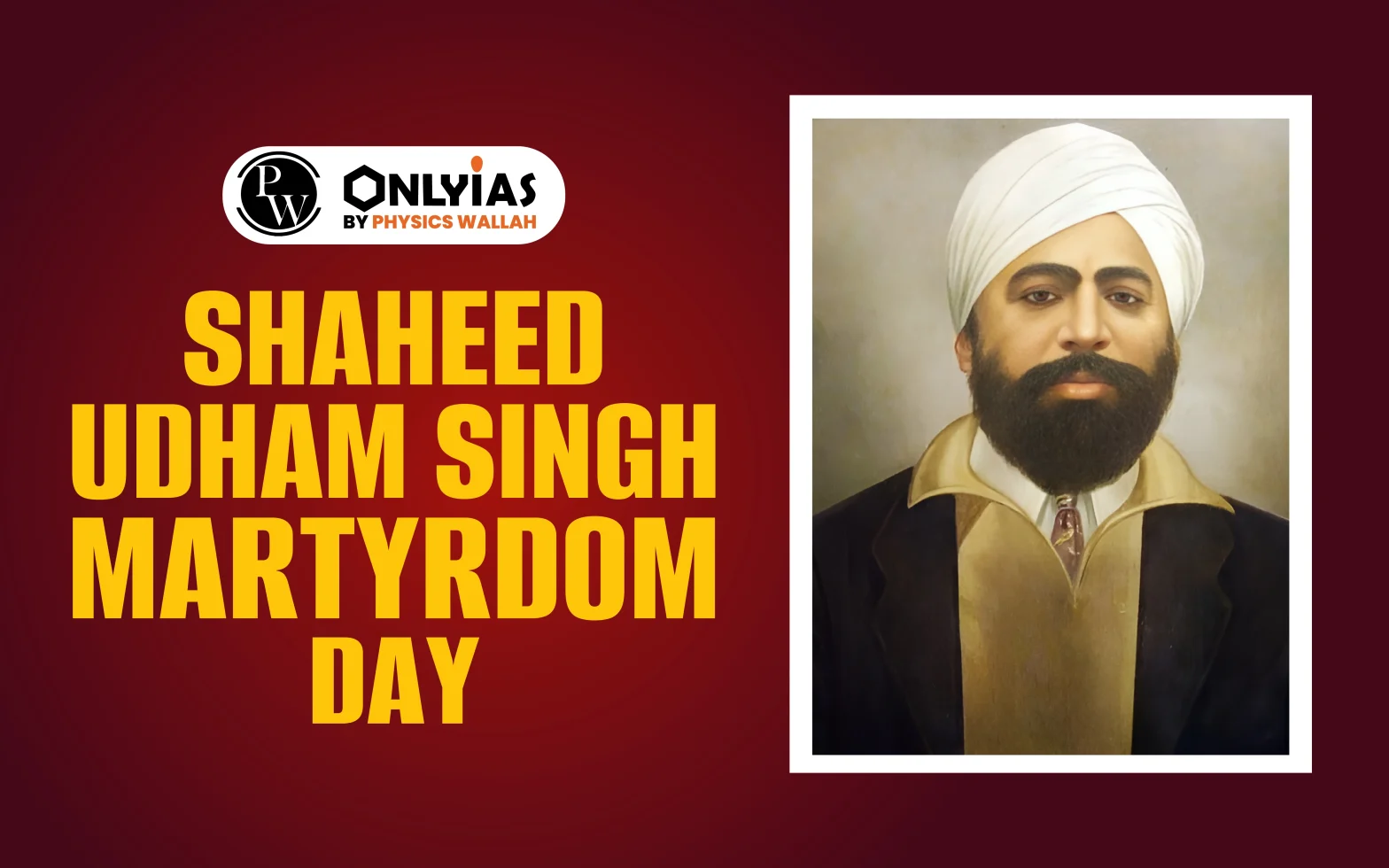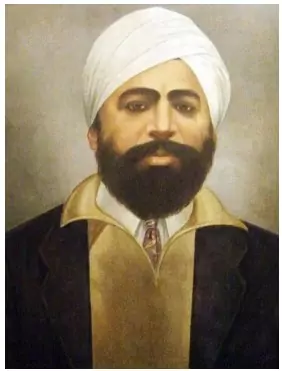Shaheed Udham Singh Martyrdom Day 2025 was observed on July 31 to honour his execution for avenging the 1919 Jallianwala Bagh massacre. He assassinated Michael O’Dwyer in 1940 and remains a symbol of India’s revolutionary spirit and freedom struggle.

Shaheed Udham Singh Martyrdom Day 2025 was observed on July 31 to commemorate the sacrifice of Udham Singh for India’s struggle against British colonial rule. On July 31, 1940, he was executed in London for the assassination of Michael O’Dwyer, the former lieutenant governor of Punjab. Michael O’Dwyer was responsible for the horrific Jallianwala Bagh massacre of 1919.
Decades later, in 1995, the legacy Shaheed Udham Singh was honored when a district in present-day Uttarakhand was named Udham Singh Nagar by then Chief Minister Mayawati. Today, we pay tribute to his contributions to India’s independence movement.
List Of International National Days 2025 Month-Wise List
This year, India was Shaheed Udham Singh Martyrdom Day on Thursday, July 31, 2025. The Punjab Government has declared this day a public holiday. Government offices and schools across the state will remain closed on this day.

Numerous revolutionaries shaped India’s journey to independence by choosing resistance over submission. Among them, Shaheed Udham Singh stands as a fierce opponent of the British Empire. He became a notable figure in the freedom movement by his act of vengeance in response to the Jallianwala Bagh massacre. Here are the martyrdom day of Shaheed Udham Singh key highlights:
| Shaheed Udham Singh Martyrdom Day Overview | |
| Particulars | Details |
| Birth Year | 1899 |
| Birth Place | Sunam, located in Punjab’s Sangrur district |
| Honorific Title | Revered as Shaheed-i-Azam Sardar Udham Singh |
| Catalyst for Activism | Deeply moved by the Jallianwala Bagh massacre on April 13, 1919 |
| Ideological Influence | Influenced by the revolutionary ideas of Bhagat Singh |
| Freedom Group Singh Joined | Ghadar Party in 1924 |
| Historic Assassination | On March 13, 1940, assassinated Michael O’Dwyer in London as revenge for Jallianwala |
| Arrest and Imprisonment | Arrested in 1927 for illegal possession of weapons |
| Execution of Udham Singh | Hanged on July 31, 1940, in Pentonville Prison, London |
Udham Singh was born on December 26, 1899, in the town of Sunam in Punjab’s Sangrur district. His parents, Sardar Tehal Singh Jammu and Mata Narain Kaur, worked hard to provide for their family. His father worked as both a small-scale farmer and a railway crossing guard in the nearby Upali village to meet the needs of the family.
In early childhood, Udham Singh lost both his parents. This incident left him and his elder brother, Mukta Singh, orphaned. Afterwards, both boys were taken in by the Central Khalsa Orphanage in Putlighar, Amritsar. The learnings Shingh received at the orphanage played a crucial role in shaping his early development and discipline.
In 1918, Singh successfully completed his matriculation. The following year, in 1919, he left the orphanage. After leaving the orphanage, Udham Singh’s life was forever changed by the Jallianwala Bagh massacre. In the Jallianwala Bagh, he was serving water to the peaceful protestors. He witnessed the brutality of the attack, where thousands of unarmed civilians were killed on the orders of General Dwyer.
The execution of Bhagat Singh in 1931, whom he considered a mentor, further intensified his desire for justice. In 1935, Singh reached London with the motive to take revenge for the Jallianwala Bagh massacre. On March 13, 1940, he shot Michael O’Dwyer at Caxton Hall. Singh was arrested soon after and, following a brief trial, was executed on July 31, 1940, at Pentonville Prison.
The Jallianwala Bagh massacre left an unforgettable mark on India’s freedom fight. On April 13, 1919, a large number of Indians gathered in Jallianwala Bagh to oppose the Rowlett Act. On this day, British forces under Brigadier-General Dwyer opened fire without warning. General Dyer ordered his troops to block exits and fire indiscriminately for about 10 minutes. The massacre resulted in the killing of over 1000 unarmed children, women, men, and elderly citizens.
In response to the killing, the Hunter Commission (1919–20) condemned Dwyer but took no disciplinary action. Seeing the inaction of the Britishers, the Indian National Congress formed its own inquiry for the Jallianwala Bagh incident. The brutality of the massacre deeply impacted Udham Singh and became the driving force behind his revolutionary actions.
In 1927, Singh was arrested for illegal possession of weapons and sentenced to 5 years of imprisonment. After his release in 1931, Udham Singh remained under close surveillance by colonial authorities in Punjab. Despite this, he managed to escape to Germany through Kashmir. Determined to avenge the Jallianwala Bagh massacre, Singh continued to work quietly toward his goal. By 1935, he had made his way to London, where he took up work as an engineer while secretly preparing for the revenge of the Jallianwala Bagh incident.
Five years later, on March 13, 1940, Singh executed the plan. He attended a meeting at Caxton Hall in London, where Michael O’Dwyer was scheduled to speak at a joint session of the East India Association and the Royal Central Asian Society. Hiding a revolver in his jacket, Singh patiently waited for the event to end.
Following the assassination of Michael O’Dwyer, Udham Singh was formally charged on April 1, 1940, and placed in Brixton Prison under strict custody. During the trial, he openly admitted to the killing, stating that O’Dwyer deserved what he got. His remarks during interrogation revealed a sense of detachment from societal norms and a deep sense of duty toward his nation’s suffering. He expressed no regret for his action and embraced death as a form of honour.
While imprisoned, Singh adopted the name Ram Mohammad Singh Azad, symbolically uniting the religious diversity of Punjab and declaring his belief in freedom. This name was a deliberate political statement, reinforcing his identity as a unifier and a nationalist who rejected religious divisions under the British.
During his time in custody, Singh also launched a hunger strike as a form of protest, which was eventually ended after 42 days through force-feeding by the prison authorities. His trial began on June 4, 1940, at the Old Bailey in London, presided over by Justice Atkinson. He was defended by V.K. Krishna Menon and St John Hutchinson, while the prosecution was led by G.B. McClure.
Singh was found guilty and sentenced to death. On July 31, 1940, he was executed by hanging at Pentonville Prison in London. Since then, this date is observed as Shaheed Udham Singh Martyrdom Day across India.
As the meeting concluded, he moved toward the stage and opened fire, shooting Michael O’Dwyer twice and killing him on the spot. The attack also wounded several prominent British officials, including:
Singh was immediately arrested by the authorities at the scene. His act was not one of mere vengeance, rather a symbolic blow against the British Empire.
Udham Singh’s legacy goes beyond his revolutionary act. He is remembered as a symbol of fearless resistance and sacrifice for India’s freedom. His name continues to inspire not only political movements but also cultural, artistic, and educational efforts in India and abroad.
Udham Singh’s contribution to India’s fight for independence is celebrated in diverse and meaningful ways. Here are the key memorials and tributes to Udam Singh:
Ready to boost your UPSC 2026 preparation? Join PW’s UPSC online courses today!
Shaheed Udham Singh Martyrdom Day is observed on July 31 every year.
The Jallianwala Bagh massacre took place on April 13, 1919, when numerous Indians gathered for a peaceful protest against the Rowlett Act.
Udham Singh considered Bhagat Singh as his mentor.
Udham Singh belonged to the Gadar Party.
Udham Shing shot Michael O’Dwyer, who was responsible for ordering open fire on Indians at Jallianwala Bagh.

<div class="new-fform">
</div>